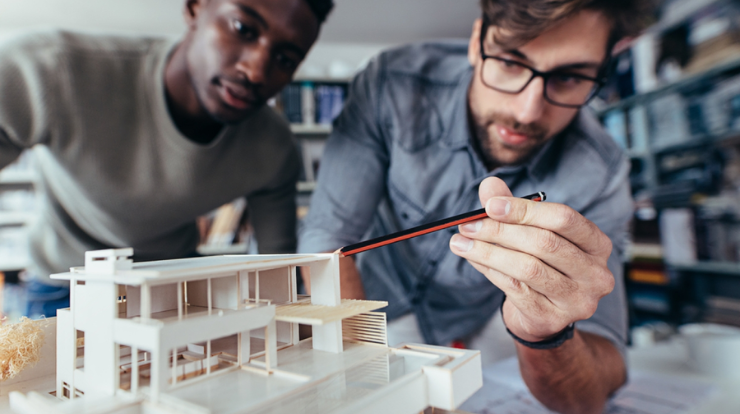Augmented Reality (AR) technology has rapidly evolved, revolutionizing various industries, and its impact on model making projects in the United Arab Emirates (UAE) is particularly noteworthy.
This article delves into the ways in which AR advancements enhance the viewer experience of model making projects, offering a blend of innovation and tradition in this dynamic field.
The Intersection of Model Making and Augmented Reality:
Model making has been an integral part of architectural and design processes, providing tangible representations of concepts. With the integration of AR, these physical models enter a new dimension, offering an immersive and interactive experience for viewers. Augmented Reality overlays digital information onto the real-world environment, creating a seamless blend of the physical and virtual realms.
Enhanced Visualization and Interactivity:
One of the primary benefits of incorporating AR into model making is the enhanced visualization it provides. Viewers can use AR-enabled devices to explore intricate details, textures, and features of the model that may be challenging to perceive with the naked eye.
This heightened level of detail fosters a deeper understanding and appreciation of the design, whether it’s an architectural prototype, urban planning model, or historical recreation.
Moreover, AR introduces a layer of interactivity to the viewing experience. Viewers can manipulate the model, zoom in on specific elements, and even receive additional information through interactive overlays. This level of engagement goes beyond the passive observation of a static model, making the experience more dynamic and participatory.
AR in Architectural Walkthroughs:
Architectural models, when augmented with AR, can transform into virtual walkthroughs. Viewers equipped with AR devices can navigate through the model as if they were physically present within the space.
This is particularly beneficial for architects, designers, and clients seeking to explore the spatial dynamics and flow of a structure before it’s built. AR-enabled walkthroughs contribute to more informed decision-making and facilitate effective communication among stakeholders.
Cultural Preservation Through AR-Enhanced Models:
In the UAE, where cultural heritage holds immense significance, AR plays a vital role in preserving and presenting historical and cultural models.
Museums and heritage sites can utilize AR to bring ancient structures and artifacts to life. Visitors can witness historical events, virtually restore deteriorated structures, and gain insights into the rich cultural tapestry of the region through AR-enhanced models.
AR-Enabled Educational Tools:
The integration of AR in model making extends its impact to education. In the UAE, educational institutions can leverage AR-enhanced models as powerful teaching aids. Students can explore subjects such as urban planning, architecture, and history in an interactive and engaging manner. This not only enhances the learning experience but also nurtures a new generation of innovators and creators in the field of model making.
Overcoming Physical Constraints with AR:
Traditional model making often faces limitations in terms of size, scale, and accessibility. Large-scale models may be challenging to transport, and intricate details might be overlooked in smaller models.
AR addresses these constraints by allowing users to virtually expand the model, focusing on specific aspects or zooming out for a holistic view. This flexibility not only facilitates ease of use but also broadens the potential audience for model exhibitions and displays.
The Impact on Stakeholder Collaboration:
Stakeholder collaboration is crucial in various projects, and AR significantly improves communication among diverse groups. Architects, designers, investors, and community members can all engage with the model simultaneously, regardless of their physical location. This fosters a collaborative environment where feedback is immediate, decisions are informed, and everyone involved gains a comprehensive understanding of the project.
Challenges and Considerations in AR-Enhanced Model Making:
While the benefits of AR in model making are evident, there are challenges to navigate. Technical requirements, cost implications, and the need for skilled personnel to develop AR applications are factors that demand careful consideration. Moreover, ensuring compatibility with a wide range of AR devices adds complexity to the integration process.
Future Prospects of AR-Enhanced Model Making in the UAE:
Looking ahead, the future of model making in the UAE is undoubtedly intertwined with the continued advancements in AR technology. As AR devices become more accessible and sophisticated, the potential for creating unparalleled and immersive model viewing experiences will only expand. This evolution aligns with the UAE’s commitment to innovation and technological progress.
Conclusion:
In conclusion, the fusion of model making and augmented reality in the UAE marks a transformative phase in the field of design and architecture.
Augmented Reality not only enhances the visual and interactive aspects of models but also contributes to cultural preservation, education, and collaborative decision-making. As AR technology continues to evolve, the realm of possibilities for model making projects in the UAE becomes increasingly exciting and boundless.

